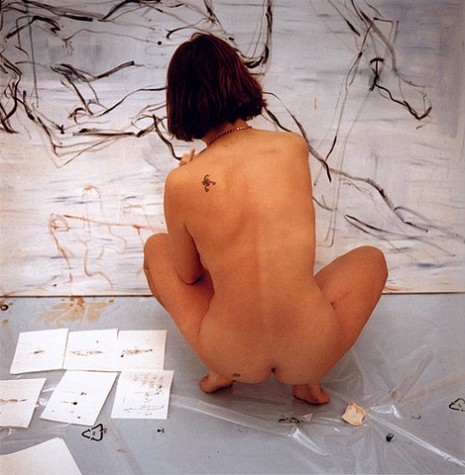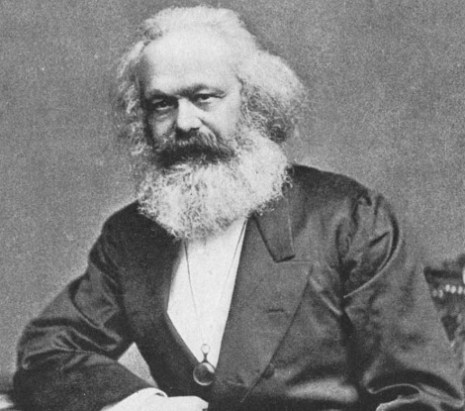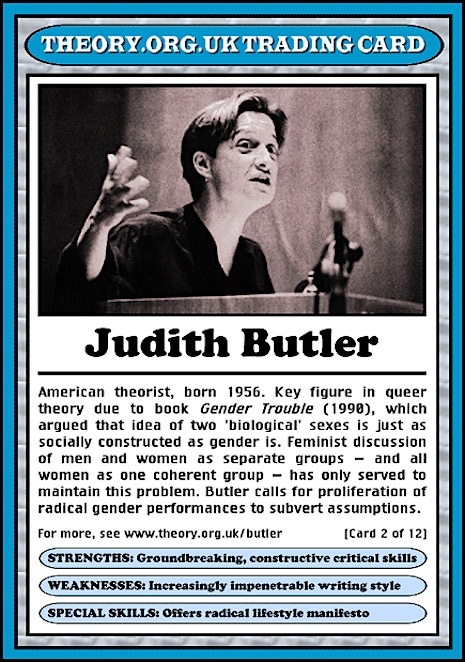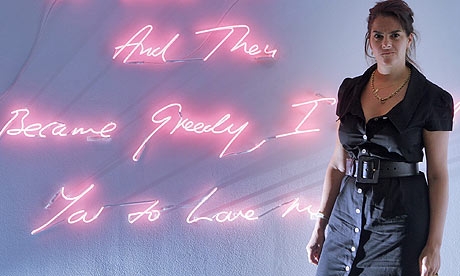
Is Tracey Emin any good? That’s the question at the heart of Anne-Claire Pilley’s documentary about the celebrated and controversial artist. Tracey Emin - Sex, Success and Celebrity, which was made to coincide with the 2008 retrospective Tracey Emin: 20 Years, pits two opposing voices against each other: neo-classical sculptor Alexander Stoddart, who claims Emin’s work is “horrendous, exploitative, and insincere,” a mix of “cynicism and sentimentalism”; and Guardian scribe and novelist, Bidisha who believes Emin is “a charisamtic, powerful woman,” who produces “real art work of value and tremendous beauty.”
Emin is a fine subject for this kind of documentary, as she has divided audiences and critics since her first solo exhibition at the White Cube Gallery in 1993, and while many may think the argument over Emin’s talent is redundant, her retrospective, Tracey Emin: 20 Years, proved it was very much alive and kicking. Laura Cumming in the Guardian, wondered whether the show was “self-pity or self-parody”:
Tracey Emin: 20 Years is an assault of a show. There is no escape from the agony. The corridors are lined with images of abuse, betrayal, sickness and abortion, tales from hell retold in embroidered banners and neon. The galleries are crammed with martyr’s relics: hospital tags, bloody plasters, painkillers, failed contraceptives, the famous bed with its stained knickers and stubbed fags - supporting evidence to further jeremiads in prose and video. The soundtracks bleeding from one room to the next alone would make you scream, except that Emin does it for you: at the top of her lungs and naked in Norway, in homage to Edvard Munch.
It has to be a joke, this video, doesn’t it? Emin couldn’t possibly expect us to take this absurd literalism seriously - or could she? This is a question for any visitor to her retrospective. Go round it solemnly by all means (and I never saw so much respectfulness as in Edinburgh), but every now and again ask yourself whether Emin mightn’t actually be sending herself up.
While, Lynne Walker in the Independent said, “Tracey Emin’s work crude and self-centered? That’s missing the point”:
...despite the graphic content of some of the work, the sequence of pictures of women with splayed legs, or the in-your-face curses and more enigmatic phrases on the beautiful and hugely detailed blankets, to dismiss her work as crude or self-centred is to miss the point. That’s just one aspect of Emin. By far the most touching examples of her work are Uncle Colin – the piece that, at least on the day I spoke to her, she would most like to save if all else were to be destroyed. A favourite relative whose sudden death traumatised her is immortalised in text and photos, just as the spirit of her grandmother hovers over the colourful There’s a Lot of Money in Chairs – mainly stuffed down the back of them, in this case. The bird drawings sing off the wall, while one of the most fascinating exhibits involves tiny photographic reproductions of work she destroyed in 1990.
It’s brave of Emin to expose so much of herself over such a long period. A short DVD, Why I Never Became a Dancer, tells a bigger story, while the reproduction, on a smaller scale, of Exorcism of the Last Painting I Ever Made from 1996 is such a personal insight that it provokes wry smiles and even a tear.
Tracey Emin - Sex, Success and Celebrity was made as part of the BBC’s Artworks (which has a ghastly opening title sequence) strand, and includes interviews with Emin, and various contributors, and discussions on Emin’s works including Uncle Colin, Why I Never Became a Dancer, A Conversation with My Mum and It’s Not The Way I Want to Die.
Before you watch, here are 10 facts about Tracey Emin, as found on her website.
1. Tracey Emin might not be the kind of artist your granny would like. Her autobiographical style of work is all about exposing the kind of things about herself that most people would be too ashamed to reveal.
2. Her confessional subjects include abortions, rape, self-neglect and promiscuity, sometimes expressed with the help of gloriously old-fashioned looking, hand-sewn applique letters. Her dad quite likes the sewing, because it reminds him of his own mum.
3. One of her installations, called Everyone I Have Ever Slept with 1963-1995 is a tent, into and onto which she has sewn all these people’s names.
4. Some see poetry in the titles of her work. They include: You Forgot to Kiss My Soul; Every Part of Me Is Bleeding; My Cunt is Wet With Fear; and I Need Art Like I Need God. There is no Still Life With Bowl of Apples, as far as we know.
5. Emin has been accused of cynically exploiting the public’s darkest levels of voyeurism.
6. But her honesty can be disarming. She once told Observer interviewer Lynn Barber that the first thing she did when she started making money was to buy medical insurance, because: “I’m sickly and I get run down and I have very bad herpes, and I like knowing that the doctor’s there.”
7. Emin’s first move into the public eye was opening a shop in London’s Bethnal Green called, er, The Shop, with fellow artist Sarah Lucas. Emin’s stock included letters she’d written and ashtrays with pictures of Damien Hirst’s face stuck to the bottom of them.
8. Emin was the inspiration - if that’s the right word - for a latter day art movement called Stuckism, which is devoted to advancing the cause of painting as the most vital means of addressing contemporary issues. The movement was founded by her ex-boyfriend Billy Childish, to whom she had once said: “Your paintings are stuck, you are stuck! Stuck! Stuck! Stuck!”
9. White Cube curator Jay Jopling spotted her in 1994 and the big time called. She came to wider public attention during a live Channel 4 Turner Prize debate in 1997. A very inebriated Emin mumbled incoherently that “no real people” would be watching and that she wanted to go be with her mum and friends.
10. Two years later, “Mad Tracey from Margate” (her words) was shortlisted for the Turner Prize for an installation entitled My Bed, a testimony to her self-neglect and over-indulgence. She didn’t win, but Charles Saatchi paid £150,000 for it.













